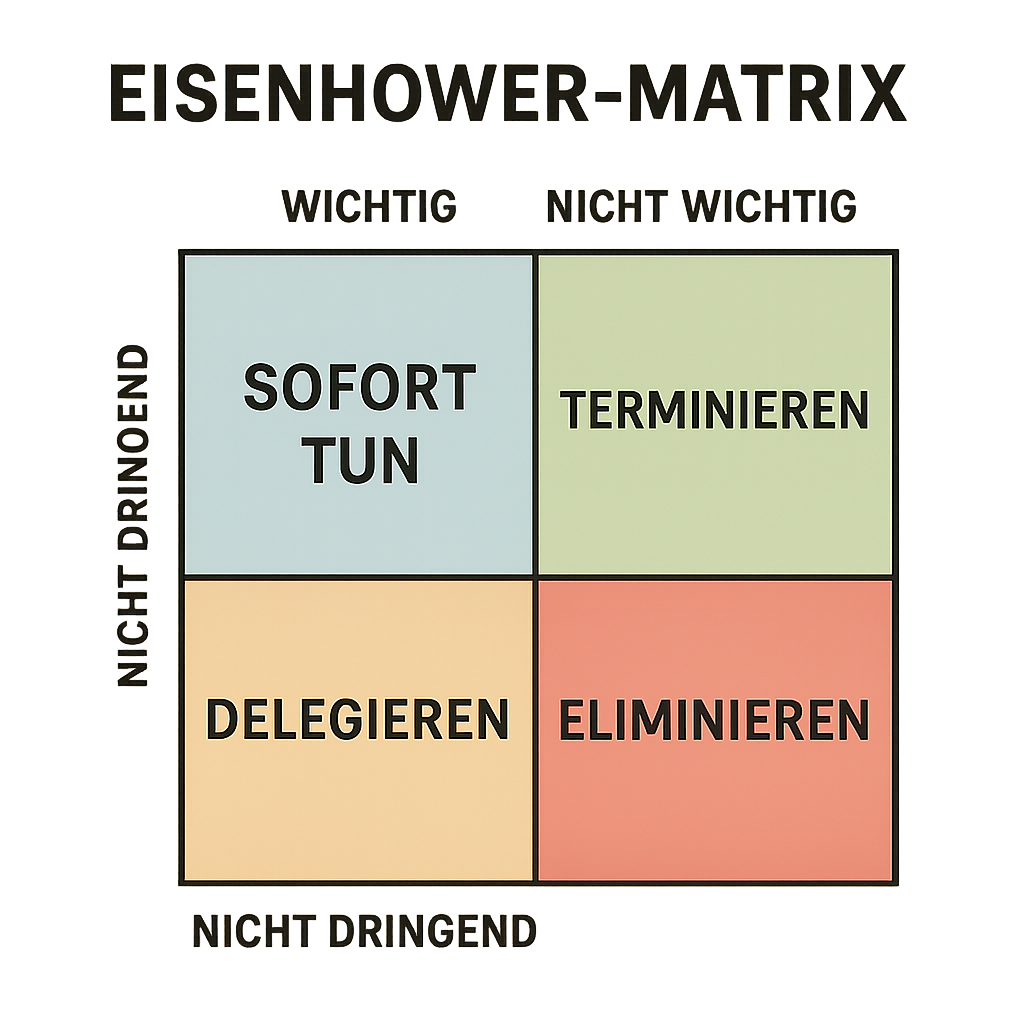Onboarding Konzept für bertrams-coordinating-complexity.com
Zielsetzung:
Das Onboarding-Konzept von Bertrams |Coordinating Complexity| verfolgt das Ziel, neue interne und externe Teammitglieder (inklusive Freelancer und Kundenmitarbeiter) effizient, compliant und kulturell integriert in komplexe Projektumgebungen zu führen. Das Konzept basiert auf den bestehenden Ansätzen des Unternehmens: Human-Centric Coordination, kooperative Spieltheorie, Anchored Enablement™ und dem Quadranten-Framework zur Koordinationseffizienz:
Einrichtung eines festen Ansprechpartners (binary point of contact) für alle Onboarding-Fragen und -Probleme

Team-Integration in das Quadranten-Framework zur effizienten Aufgabenverteilung
Das Quadranten-Framework, auch bekannt als Eisenhower-Matrix, ist ein bewährtes Instrument zur Priorisierung und effizienten Verteilung von Aufgaben1. Diese Methodik kategorisiert Aufgaben basierend auf zwei Dimensionen: Wichtigkeit und Dringlichkeit2. Das Framework unterteilt alle Aufgaben in vier klar definierte Quadranten, die jeweils unterschiedliche Handlungsstrategien erfordern3.

Die vier Quadranten im Detail
Quadrant 1: Do First (Sofort erledigen)
Der erste Quadrant umfasst Aufgaben, die sowohl wichtig als auch dringend sind4. Diese Aufgaben erfordern unmittelbare Aufmerksamkeit und haben hohe Auswirkungen auf die Zielerreichung5. Typische Beispiele sind Krisenmanagement, dringende Deadlines oder akute Probleme, die sofortige Lösungen benötigen6.
Quadrant 2: Schedule (Planen und terminieren)
Im zweiten Quadranten befinden sich wichtige, aber nicht dringende Aufgaben7. Diese Kategorie ist besonders wertvoll für langfristige Ziele und strategische Entwicklung8. Aufgaben hier sollten bewusst geplant und in den Kalender eingetragen werden, da sie oft zugunsten dringenderer Tätigkeiten vernachlässigt werden9.
Quadrant 3: Delegate (Delegieren)
Der dritte Quadrant beinhaltet Aufgaben, die dringend, aber nicht wichtig sind10. Diese Tätigkeiten sollten an andere Personen delegiert werden, wenn möglich11. Delegation ist eine der effizientesten Methoden des Zeitmanagements und ermöglicht es, sich auf wichtigere Aktivitäten zu konzentrieren12.
Quadrant 4: Eliminate (Eliminieren)
Im vierten Quadranten finden sich Aufgaben, die weder wichtig noch dringend sind13. Diese Aktivitäten sollten eliminiert oder drastisch reduziert werden, da sie lediglich Zeit und Energie verschwenden1. Regelmäßiges Überprüfen und Bereinigen dieses Quadranten ist essentiell für eine effektive Zeitnutzung2.
Praktische Anwendung im Onboarding-Kontext
Die Integration des Quadranten-Frameworks in das Onboarding-Konzept von Bertrams |Coordinating Complexity| erfolgt durch systematische Kategorisierung aller onboarding-relevanten Aufgaben3. Jede Aktivität wird entsprechend ihrer Wichtigkeit für den Integrationserfolg und ihrer zeitlichen Dringlichkeit eingeordnet4.
Implementierungsstrategie
Die erfolgreiche Anwendung erfordert zunächst eine gründliche Analyse aller Onboarding-Aufgaben. Anschließend werden diese systematisch den vier Quadranten zugeordnet, wobei sowohl die Bedürfnisse des neuen Teammitglieds als auch die Projektanforderungen berücksichtigt werden – Die Visualisierung mittels der Matrix schafft Transparenz und ermöglicht eine gemeinsame Priorisierung aller Beteiligten.
Regelmäßige Reviews und Anpassungen der Quadranten-Zuordnung sind notwendig, da sich Prioritäten während des Onboarding-Prozesses verschieben können. Die Methodik unterstützt dabei, den Fokus auf die wirklich wichtigen Integrationsschritte zu legen und gleichzeitig eine Überlastung zu vermeiden.
Integrating the Eisenhower Matrix with Team Building at Bertrams Coordinating Complexity
Executive Summary
Bertrams Coordinating Complexity, based in Papenburg, Germany, specializes in enabling complex business transformations, particularly in digital transformation and post-merger integration. Integrating the Eisenhower Matrix with your team-building approach aligns perfectly with your Anchored Enablement™ philosophy—focusing on activating a company’s inherent strengths rather than imposing external solutions. This integration combines clear role allocation, dynamic prioritization, and advanced technology, leveraging your FluentBoards, FluentCommunity, and FluentCRM tools.
Strategic Integration Framework
1. Quadrant-Based Role Assignment
The Eisenhower Matrix divides tasks into four quadrants (urgent/important, not urgent/important, urgent/not important, not urgent/not important). This structure fits well with Bertrams’ “OneTeam” approach and cultural DNA mapping:
- Quadrant 1 (Do First: Urgent & Important): Crisis managers and project leads handle critical, time-sensitive tasks—ideal for post-merger integration scenarios.
- Quadrant 2 (Schedule: Important, Not Urgent): Strategic planners focus on long-term goals and preventive actions, supporting sustainable transformation.
- Quadrant 3 (Delegate: Urgent, Not Important): Operational staff and freelancers handle routine but urgent tasks, leveraging hybrid teams.
- Quadrant 4 (Eliminate: Neither Urgent nor Important): Team leaders identify and remove time-wasting activities, aligning with your business case-driven approach.
2. Technology Integration with Fluent Tools
Your digital infrastructure is ideal for deploying the Eisenhower Matrix at scale:
- FluentBoards: Visual Kanban boards allow teams to organize tasks by Eisenhower quadrant, using color codes and priority tags.
- FluentCommunity: Facilitates capacity mapping, stakeholder engagement, and real-time communication—crucial for international, cross-functional teams.
- FluentCRM: Manages delegation, alerts, and contact management, ensuring accountability and optimal resource allocation.
3. AI-Powered Task Classification
An AI-enhanced system can automatically classify and assign tasks based on Eisenhower Matrix criteria, considering:
- Team skills and historical project data
- Current workload and capacity
- Project dependencies and timelines (aligned with S&OP and IBP frameworks)
- Cultural and communication preferences
This system continuously improves through machine learning, optimizing task placement and resource allocation.
4. Dynamic Prioritization & Conflict Prevention
- Automated Alerts: Early warning systems prevent important tasks from becoming urgent crises, supporting a proactive rather than reactive culture.
- Capacity Management: Limiting the number of urgent/important tasks per person prevents burnout and maintains productivity.
5. Cultural Integration & Cross-Regional Coordination
- Cultural DNA Mapping: Ensures the Eisenhower Matrix respects and aligns with each client’s cultural values and organizational history.
- Cross-Cultural Communication: The visual matrix transcends language barriers, supporting international collaboration and transparent resource allocation.
Implementation Roadmap
Phase 1: Pilot (Weeks 1-4)
- Select 2-3 projects for initial rollout
- Configure FluentBoards with Eisenhower templates
- Train teams on quadrant-based task management
- Establish baseline metrics
Phase 2: Technology Integration (Weeks 5-8)
- Deploy AI-powered classification
- Integrate workflows across FluentBoards, FluentCommunity, and FluentCRM
- Set up dashboard monitoring and notifications
Phase 3: Full Deployment (Weeks 9-16)
- Scale system to all projects
- Integrate with S&OP and IBP processes
- Collect feedback and refine best practices
Measurable Benefits
- 30% increase in project transparency via visual task management
- 40% fewer scheduling conflicts thanks to AI-driven capacity management
- 25% higher team productivity by eliminating low-value activities
- 90% resource utilization efficiency through skills-based delegation
Conclusion
Integrating the Eisenhower Matrix with Bertrams’ team-building and digital toolset will amplify your role as an “Enabler” of sustainable transformation. This approach supports your OneTeam philosophy, leverages your advanced project management methodologies, and ensures cultural sensitivity—delivering measurable improvements in efficiency, transparency, and collaboration for complex, international projects.
